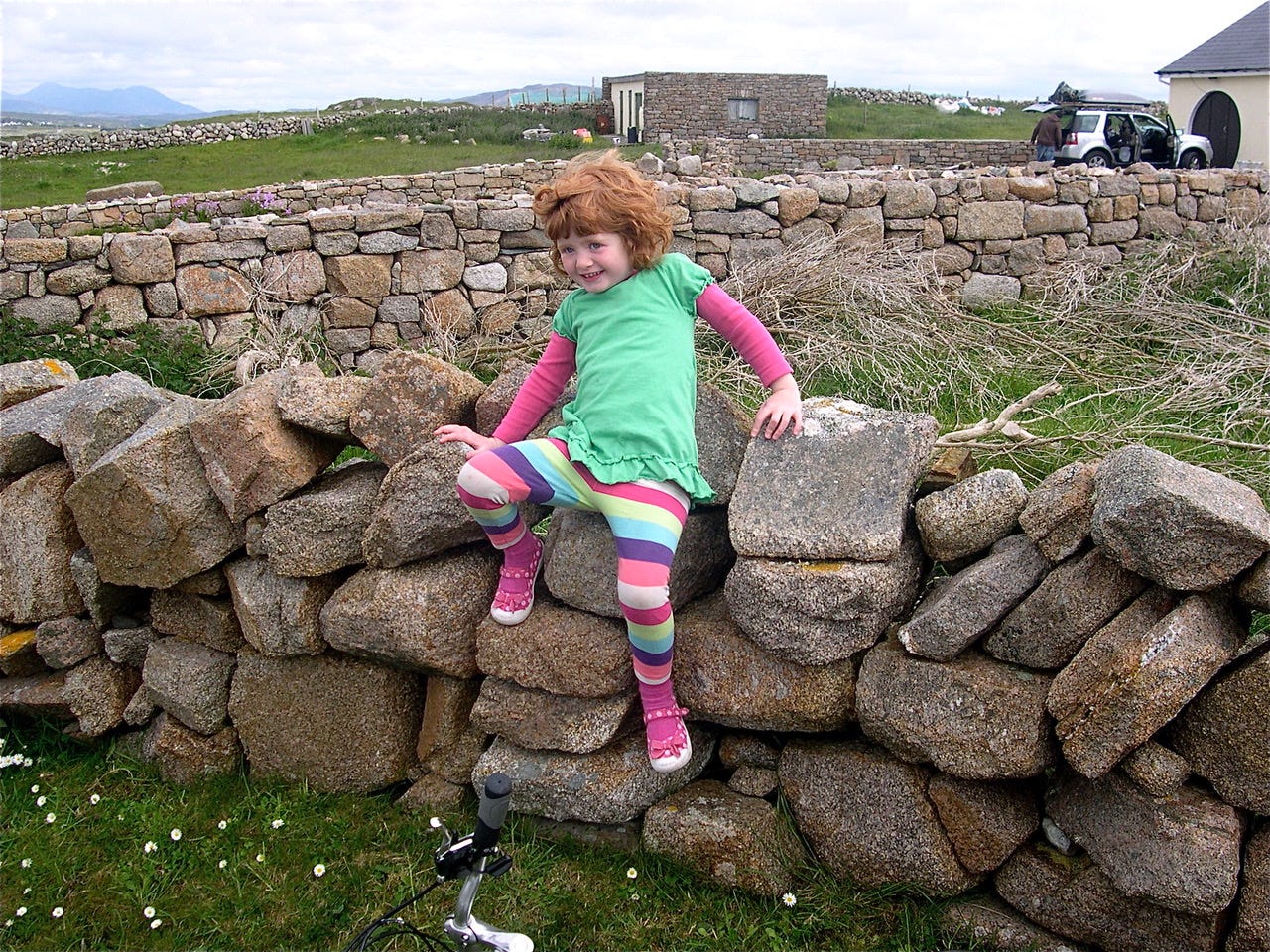I thought it much safer to cross the strand on foot. I didn’t think of rising tides, timing or tables. We simply set off and I hoped I wasn’t leading my whole family into an abyss. Rob’s long legs carried him far out ahead of the pack. In the distance I could make out the orange stripe of his jacket and the blue visor of the baseball cap he wore flipped around backwards on his head. He wound his way around boulders and buoys, around a set of soccer goals and nets. I waded through more puddles, and when my sneakers finally became heavy and sodden, I stopped, pulling off my shoes and socks, and took up the journey barefoot.
About half way across the strand, I began to make out the outlines of tombstones, Celtic crosses rising up in the air on the horizon. Silhouettes, the stones boldly marked the perimeter of an ancient cemetery--St. Brendan’s--whose history stretched back for hundreds of years. Closer still, a long expanse of grass ushered my eyes from the shore to a slight rise on Omey Island where the graveyard came into more focus. The grass, so verdant, so wet with the morning rain, heightened the blue tint of the sky. A wall surrounded the expanse of land, dividing it clearly into an old section with weather-beaten stones leaning into the wind, and a smaller newer section with fresher, polished markers. At last, I hit solid ground, slipped back into my shoes, and made the climb inside the cemetery walls.
Where we were, I found out later, was not just any island. We were on Omey Island, a sacred site of approximately 540 acres, with a rich and suggestive history. Omey Island hadn’t always been uninhabited. In fact, many times in its history, it had served as an important place of refuge. In the Celtic mindset, all islands were sacred. Ireland, a large island off the larger island of England, was itself a scared landscape. Omey, was an island off an island off an island. Three times sacred. The Celtic mind was always looking to the west, an honored direction. So here in this rough, wild peninsula in Connemara, its people carried their dead across the sand for burial on this island, the only place in Ireland where people left the mainland for interment.
That first day on Omey Island, I had little knowledge of what lay over the edge of the sand blown hills that cupped the cemetery. The eastern edge of the island that faces the mainland and shelters St. Brendan’s embraces a green, gently lapping foamy sea. But just over the hills, the southern and western edges of Omey are rough, jagged with rocks, indented and dangerous to fisherman and travelers alike. A narrow blacktop road winds from the cemetery past the ruins of an old manor house. The crumbling bricks of three separate chimneys poke up into the sky, suggesting grander days. The road pushes on past a cluster of small farmhouses, a couple of sheep grazing in the pasture. . .
—from an in-progress memoir, Patches: Letter from a Family Farm in Ireland, by Mary Lynch Swander
Happy St. Patrick’s Day! I am honored to be part of the Iowa Writers Collaborative. Please support my colleagues and their columns below:






Your narrative is so lush, dare I say almost poetic. I want the book.
This is a very powerful reflection, Mary. Thank you for sharing it with us. As a lady of Irish ancestry who has walked across many graveyards in Ireland I felt like I was with you, soggy shoes and all ☘️!
Happy St. Patrick’s Day to you!